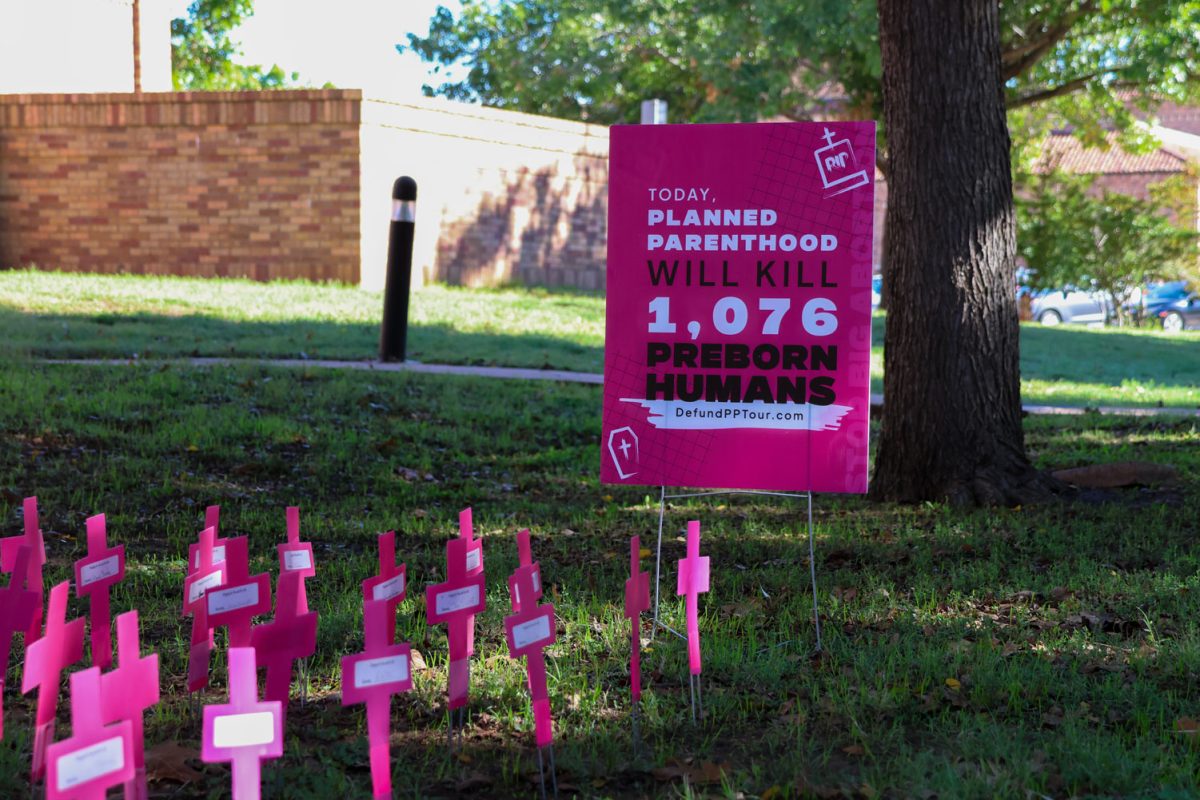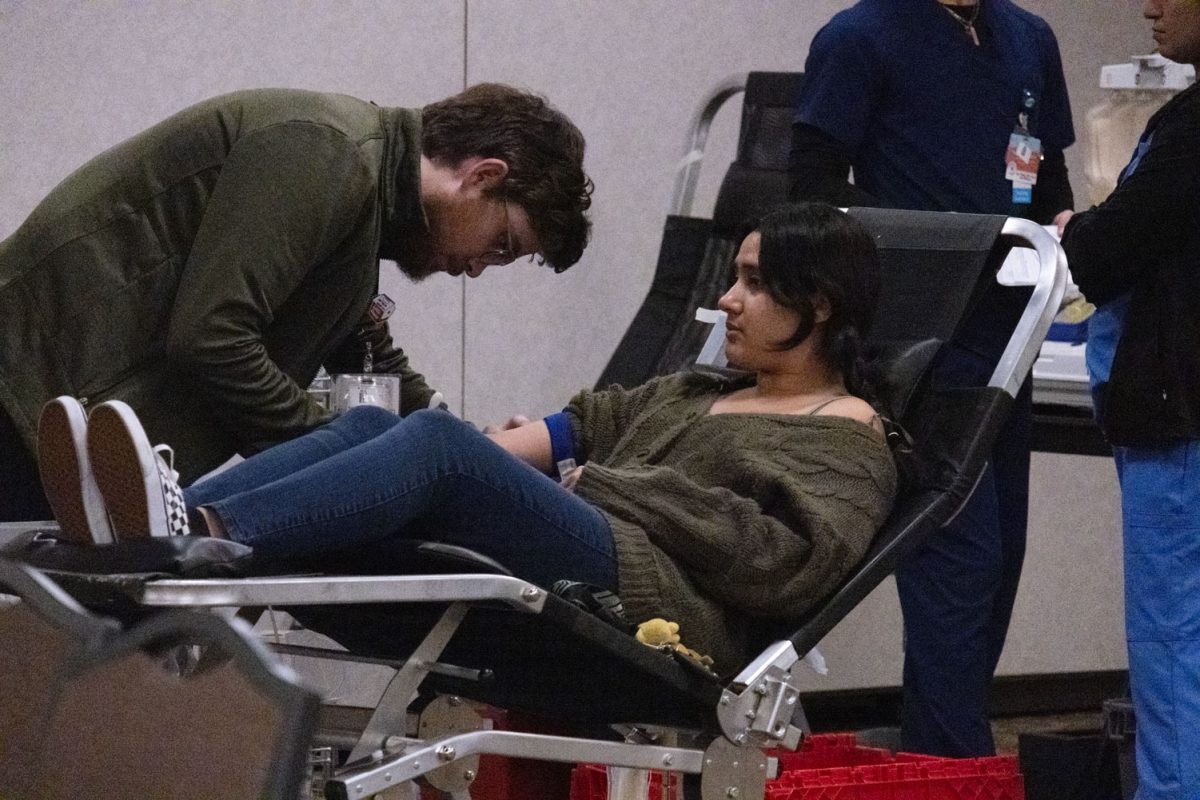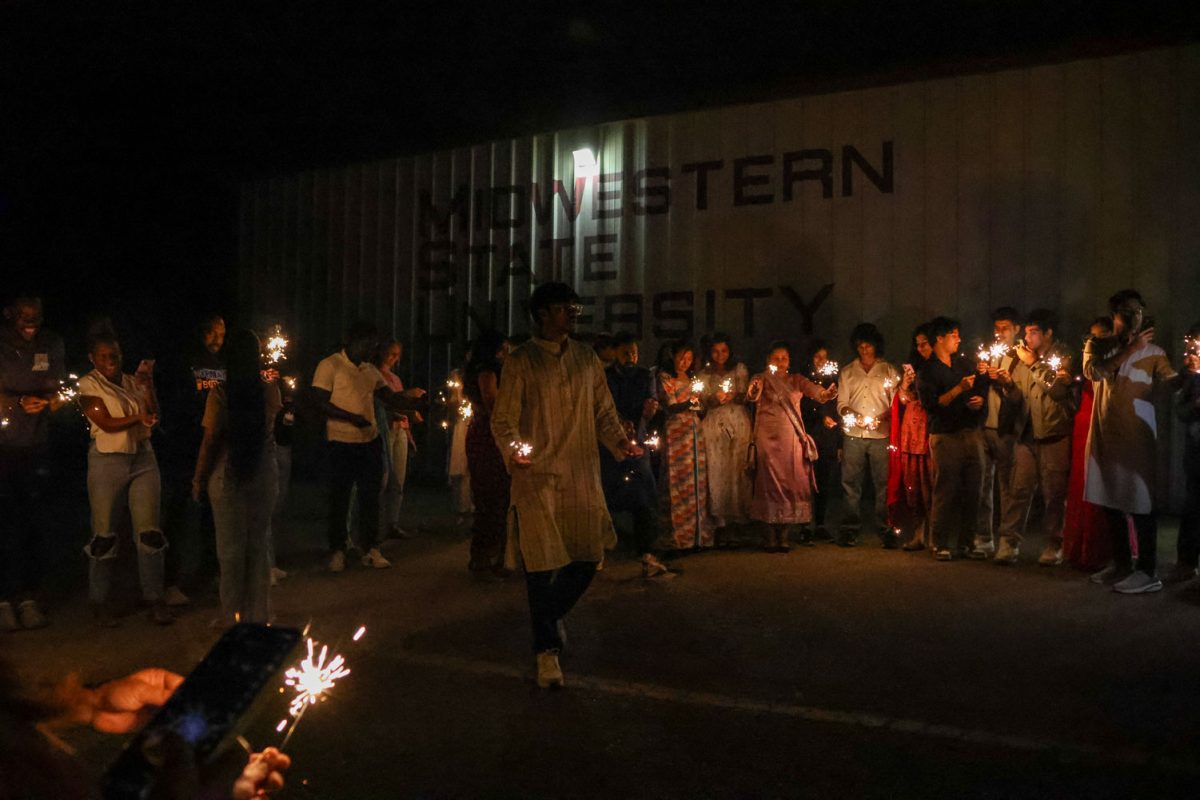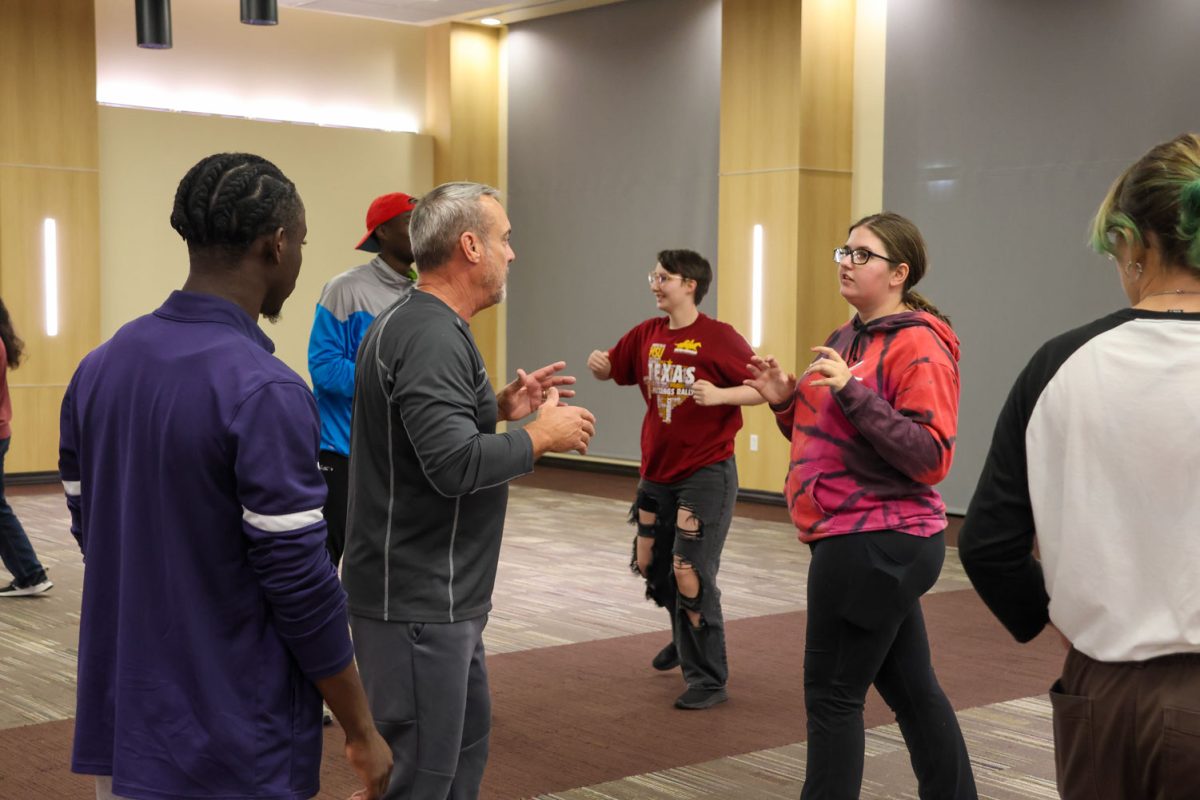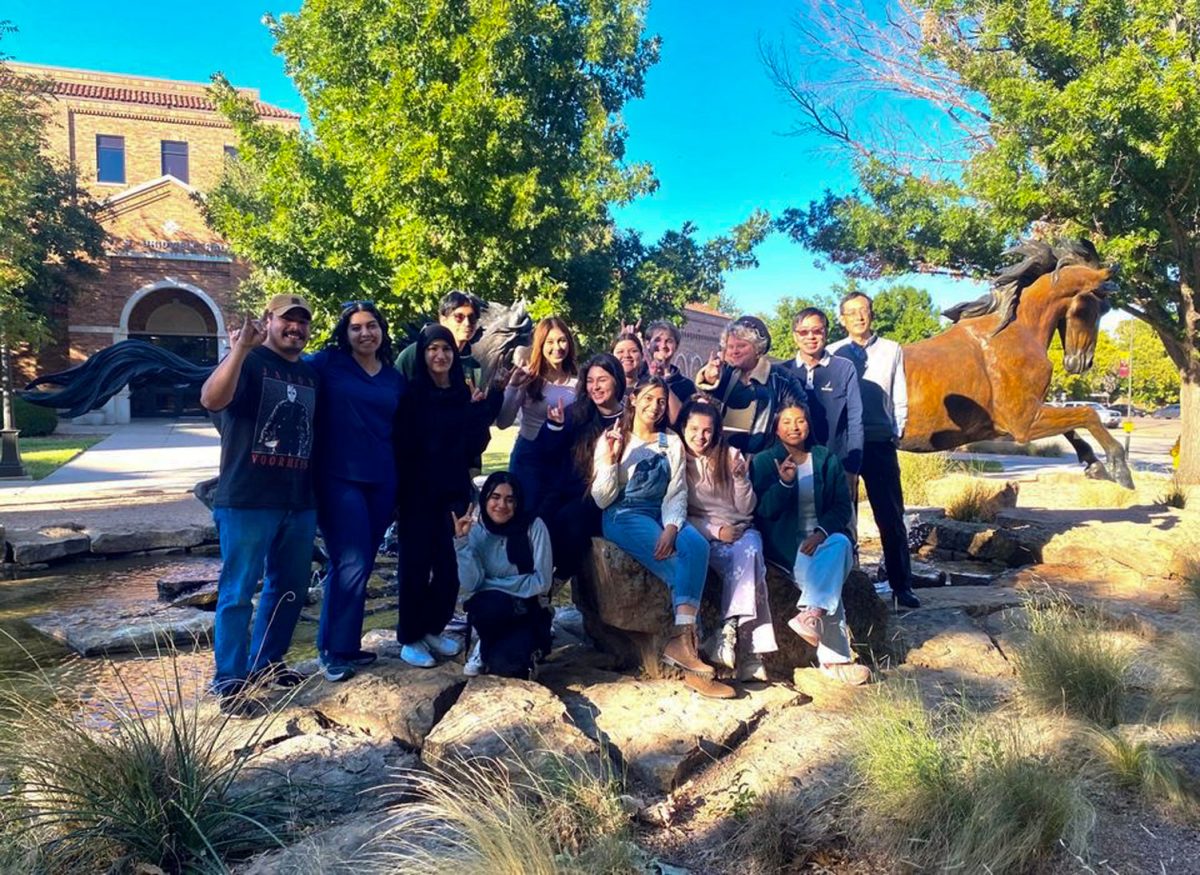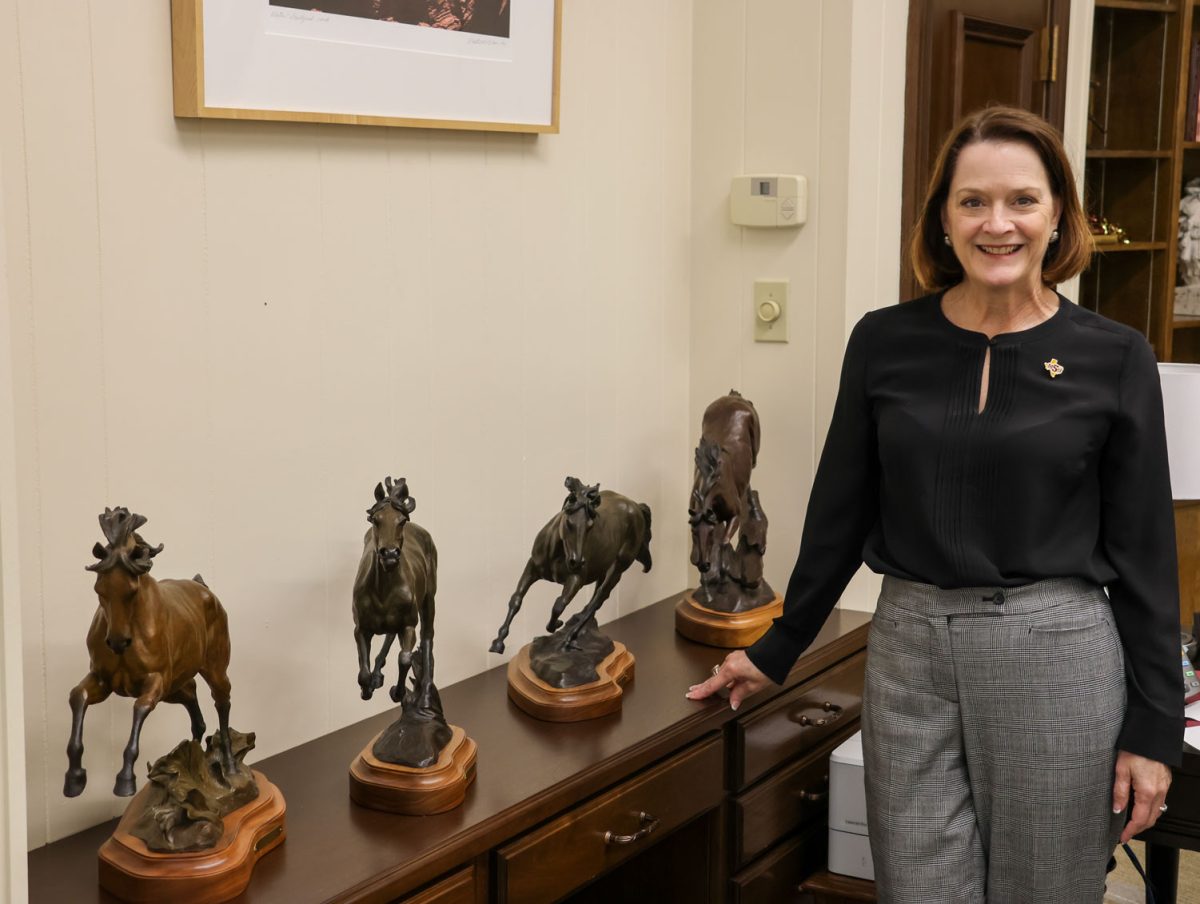As Alexandria Weiskircher, junior in geology, places all 19 of her new igneous rocks into her collection she started as a young girl, she reflects on the weekend she spent with 10 other petrology students in The Wichita Mountains, Saturday, April 12.
“I love the field trips. I loved the Wichita Mountains and getting a feel of the different rocks,” Weiskircher said. “I loved rocks as a little girl, but when I first came to college I went into pre-pharmacy.” Weiskircher now majors in geology and has to take a field trip for each class she was with Jonathan Price, chair and associate professor of geosciences.
This petrology field trip was centered around texture and type of rock.
“You have to see the rocks to understand the rocks,” Price, said. “We wanted to see the features of the ancient volcanoes at the Wichita Mountains. What’s nice about ancient volcanoes is that you can walk around inside of them, so you can see pretty deep into what is going on.”
Price said with modern volcanoes like Kilauea in Hawaii, people can see erupting, but they don’t get to see what’s really going on underneath.
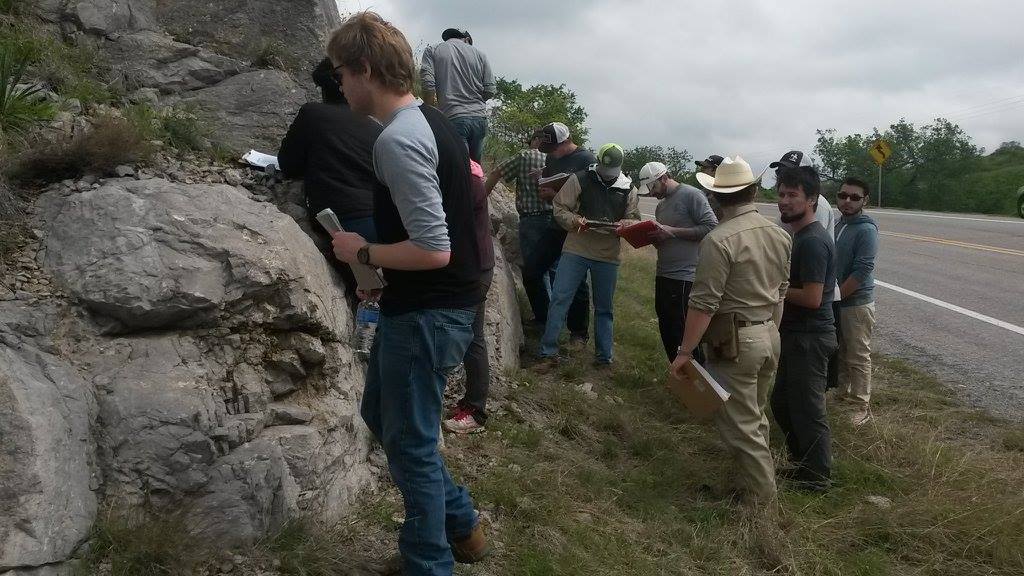
“The Wichita Mountains is nice place to look and see what’s going on inside of the earth, and that’s part of what the class is about, using rocks to tell you what happened inside the earth,” Price said.
The students had packets to fill out throughout their trip as well as take pictures of certain things. Price would lecture at each stop to explain what was happening.
The students departed on their voyage at 6 a.m. The route started in the eastern part of the mountains, north of Lawton, Oklahoma.
“A lot of people drive past them and see the mountains off to the side, but they’re unique because we’re in the rolling planes and that’s the only topography in the area,” Price said.
They made their way up the mountain to look at volcanic rocks that are on the surface, and then made their way down to look at the interior of the volcanoes. From there they visited the top of Mount Scott to get a look view of everything, but the wind set in.
“We made our way Westward from there, and then the rain set in,” Price said. “We walked in the rain for a while. We were in the worst part of it, I think, but the students were good-natured about it.”
In the westward route they found the Wildlife Refuge that is common to buffalo and longhorn. Price said the group saw a lot of deer, a raccoon and a skunk.
At the end of the day, the group rolled west past Altus, and camped for the night at Quartz Mountain.
“The camping went well. It was a little windy, which made sleeping in my hammock a little difficult, but the temperature was perfect,” Josh Aaron, senior in geology, said. “We made delicious tacos for dinner.”
On certain trips, the students get to pick the menu and are given a budget to grocery shop. Then they cook for everyone.
The next morning the group studied rocks in the Quartz Mountain area.

“There are similar rocks from place to place, but there are differences that students should pick up on by this point,” Price said. “And they were able to do that.”
They finished the trip by going from the most westward portion of the Wichitas to the most central portion.
The group went to look at the surface flow rocks which are rhyolites, and then look at the granites which are crystalized underground.
“Being in the field allows me to physically see what I’m taught in the classroom,” Aaron said. “Personally, I’m a visual learner, so I tend to gain a lot from being there.”
“The students were very keen at picking up differences. They did a good job of noting different sizes of individual crystals in the rocks, how the crystals are put together and what minerals are present,” Price said. At the central part of the Wichitas is a darker rock called gabbro. It crystallizes deep under ground, so far underneath the volcanoes.
“It makes for some very interesting rock that can’t be seen in a lot of places,” Price said.
Price’s colleagues radiometrically dated the rocks to be 545 million years old.
Weiskircher said the trip helpful towards her understanding of igneous rocks and her career.
“I didn’t know what I wanted to do with geology and there is a lot of igneous activity in the mountains and the trip got me more interested in it,” Weiskircher said.
Cut short by mother nature, the upper level structural geology class explored marine carbonate faults and bends of the mountains in Altus, Oklahoma last Saturday, April 17.
The first two formations studied were lime stone and shale. They are marine formations of later day sea.
“The shale was organic and rich. It’s a very good source for petroleum,” Aaron said. “With the limestone being marine, it had a lot of fossils throughout and it was cool seeing that”, Aaron said.
Oil is drilled in areas like this because igneous rock is found under the these marine rocks.
They went further back in time at the second stop and studied an offshore marine environment from ancient reef rocks. Afterwards they stopped for fried pies.
Their third stop was the Arbuckle Mountains, which as a water fall.
“The Arbuckles are interesting because of all the deformation that takes place,” Aaron said.
The deformation is presented by way of folding, fracture, anticline and syncline.
“Seeing the different structures reinforced everything that I learned in the classroom, ” he said.
The last stop presented large anticline. There they measured strike, dip, and cleavage using a brunton.





